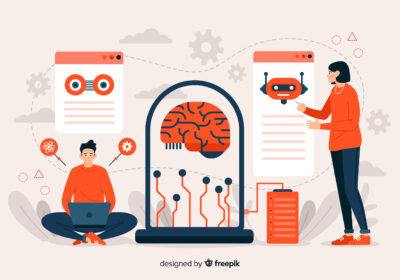In web development, success isn’t just about code—it’s about how you build. The methodology you choose can mean the difference between a sleek, on-time launch and a chaotic, over-budget mess. From Agile to Waterfall to DevOps-driven approaches, the options are plenty—but which one’s right for your project?
At Verbat, we’ve delivered cutting-edge web solutions for years, navigating every methodology under the sun. In this blog, we’ll break down the top contenders, weigh their pros and cons, and help you pick the perfect fit for your next web development venture. Let’s dive in!
Why Methodology Matters in Web Development
Web projects are unique beasts—tight deadlines, evolving requirements, and user expectations that shift overnight. A solid methodology keeps teams aligned, budgets in check, and quality high. But there’s no universal “best”—it depends on your goals, team, and project scope. Here’s a look at the heavy hitters.
1. Waterfall: The Classic Blueprint
What It Is
Waterfall is the OG of development methodologies—linear, sequential, and structured. You plan everything upfront, then move through phases: requirements, design, development, testing, and deployment.
Pros
- Clarity: Detailed planning means everyone knows the endgame.
- Predictability: Fixed timelines and budgets appeal to stakeholders.
- Great for Fixed Specs: Ideal when requirements won’t budge (e.g., compliance-heavy sites).
Cons
- Rigidity: Changes mid-project? Tough luck—Waterfall doesn’t bend.
- Late Feedback: You don’t see the product until the end, risking costly rework.
- Slow Delivery: No incremental releases—users wait for the full build.
Best For
Static, well-defined projects—like a corporate intranet with locked-in specs.
2. Agile: The Flexible Favorite
What It Is
Agile breaks work into short sprints (typically 2-4 weeks), delivering usable chunks iteratively. Think Scrum or Kanban—constant collaboration, adaptability, and feedback drive the process.
Pros
- Flexibility: Evolving requirements? Agile thrives on change.
- Faster Releases: Deliver MVPs or features early and often.
- Client Involvement: Regular check-ins keep stakeholders happy.
Cons
- Scope Creep: Without discipline, “just one more feature” can derail timelines.
- Resource Intensive: Needs active team and client participation.
- Less Predictable: Costs and timelines can shift.
Best For
Dynamic web projects—like e-commerce platforms or startups needing rapid iteration. Verbat’s Agile expertise shines here!
3. Scrum: Agile’s Structured Sibling
What It Is
A flavor of Agile, Scrum uses fixed sprints, defined roles (Product Owner, Scrum Master, Dev Team), and ceremonies (daily standups, retrospectives) to keep things tight.
Pros
- Focus: Sprints lock in priorities, cutting distractions.
- Team Empowerment: Self-organizing teams boost morale and output.
- Transparency: Burndown charts and reviews keep progress visible.
Cons
- Overhead: Meetings can bog down small teams.
- Experience Needed: Scrum shines with disciplined, seasoned crews.
Best For
Medium-to-large web projects with clear goals—like a SaaS dashboard needing iterative polish.
4. Kanban: Flow Over Sprints
What It Is
Another Agile offshoot, Kanban ditches sprints for a continuous flow. Visualize tasks on a board (To Do, In Progress, Done) and limit work-in-progress (WIP) to avoid overload.
Pros
- Simplicity: No rigid ceremonies—just pure flow.
- Real-Time Adjustments: Add tasks anytime without sprint resets.
- Efficiency: WIP limits prevent burnout and bottlenecks.
Cons
- Less Structure: Can feel chaotic without strong oversight.
- Slower Urgency: No sprint deadlines may delay delivery.
Best For
Ongoing web maintenance or small teams—like updating a content-heavy site.
5. DevOps: Beyond Development
What It Is
DevOps blends development and operations, emphasizing automation, CI/CD (Continuous Integration/Continuous Deployment), and collaboration. It’s less a “methodology” and more a culture for rapid, reliable delivery.
Pros
- Speed: Automated pipelines mean near-instant deployments.
- Quality: Frequent testing catches bugs early.
- Scalability: Perfect for cloud-based web apps.
Cons
- Upfront Investment: Tools (e.g., Jenkins, Docker) and training take time.
- Complexity: Small teams may struggle with the tech stack.
Best For
High-traffic, scalable web projects—like a cloud-hosted marketplace. Verbat’s DevOps chops make this a breeze!
How to Choose the Right Methodology
No methodology wins by default—it’s about context. Ask yourself:
- Project Size: Small site revamp? Kanban. Massive web app? Scrum or DevOps.
- Flexibility Needs: Fixed scope? Waterfall. Constant pivots? Agile/Scrum.
- Timeline: Tight deadline? Agile or DevOps for speed. Long runway? Waterfall’s fine.
- Team Expertise: Newbies? Stick to Waterfall or Kanban. Pros? Scrum or DevOps.
- Client Involvement: Hands-on client? Agile. Hands-off? Waterfall.
Mixing It Up: Hybrid Approaches
Why choose one? Many successful web projects blend methodologies:
- Waterfall + Agile: Plan big milestones, then sprint within them.
- Scrum + Kanban: Use sprints for dev, Kanban for maintenance.
- DevOps + Agile: Pair iterative builds with automated deployments.
At Verbat, we’ve mastered tailoring hybrid workflows to fit unique needs—because real-world projects rarely play by one rulebook.
The Verbat Difference
Choosing a methodology is half the battle—executing it is the other. With decades of web development experience, Verbat brings expertise across Waterfall, Agile, DevOps, and more. We don’t just pick a process; we craft a strategy that delivers your vision—on time, on budget, and on point.
There’s no “best” methodology—only the best for your web project. Assess your goals, team, and constraints, then test the waters. Start small, iterate, and scale what works. Need help picking or implementing? Verbat’s here to guide you—let’s build something extraordinary together!





